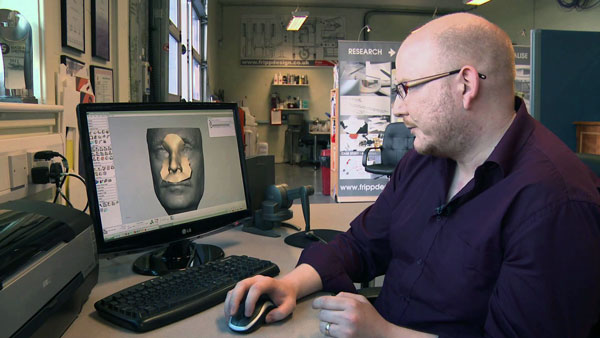There have been numerous attempts to create artificial structures which bear a close resemblance to human soft tissue, in a faster and cheaper way. With the evolution of 3D printing and some dedicated technicians, that day does not look far.
Tom Fripp, an industrial designer started working on creating cosmetic facial replacement via 3D printing, after being contacted by the researchers from University of Sheffield. According to them, the years of collaborative work and prototyping is getting culminated in to a useful process of creating 3D printed facial parts.
As per the process, a patient’s face is first 3D scanned and then appropriate details are added to the prosthetic part of interest in the digital face created. This first ensures perfect fit and eliminates the painful process of fitting physically, which can be cumbersome. After the virtual prosthetic part is ready, it is 3D printed in natural full colour using starch powder to form a model. The model is then vacuum-formed with medical grade silicone to get the end part. The components are mound together to ensure the resultant prosthetic to be both durable and flexible. The process though involves some initial set of work and costs similar to the traditional process of molding and casting, the recreation becomes very cheap and accurate. This is an important consideration, considering the fact that prostheses can eventually wear out from exposure to sun and wate. 3D printing simplifies the process and thereby allows for a much greater range of customization per an individual patient’s requirements.
Mr.Fripp is hopeful of coming up with a much smoother and faster way of achieving the prosthesis within 48 hours, in a span of one year. He is working on printing silicon directly, avoiding the step of creating start models, which often create unsightly white lines formed due to reaction of silicon with starch. He has even plans to work on ocular prosthesis.
Source: 3dprinterworld (dot)com
